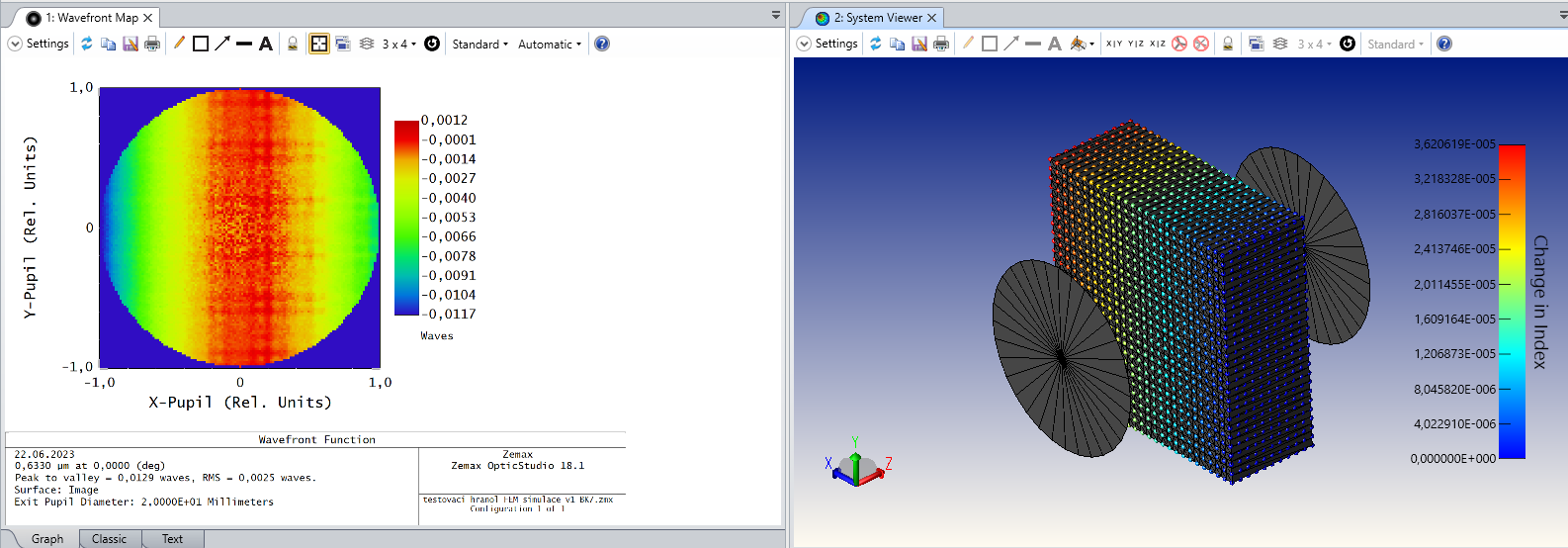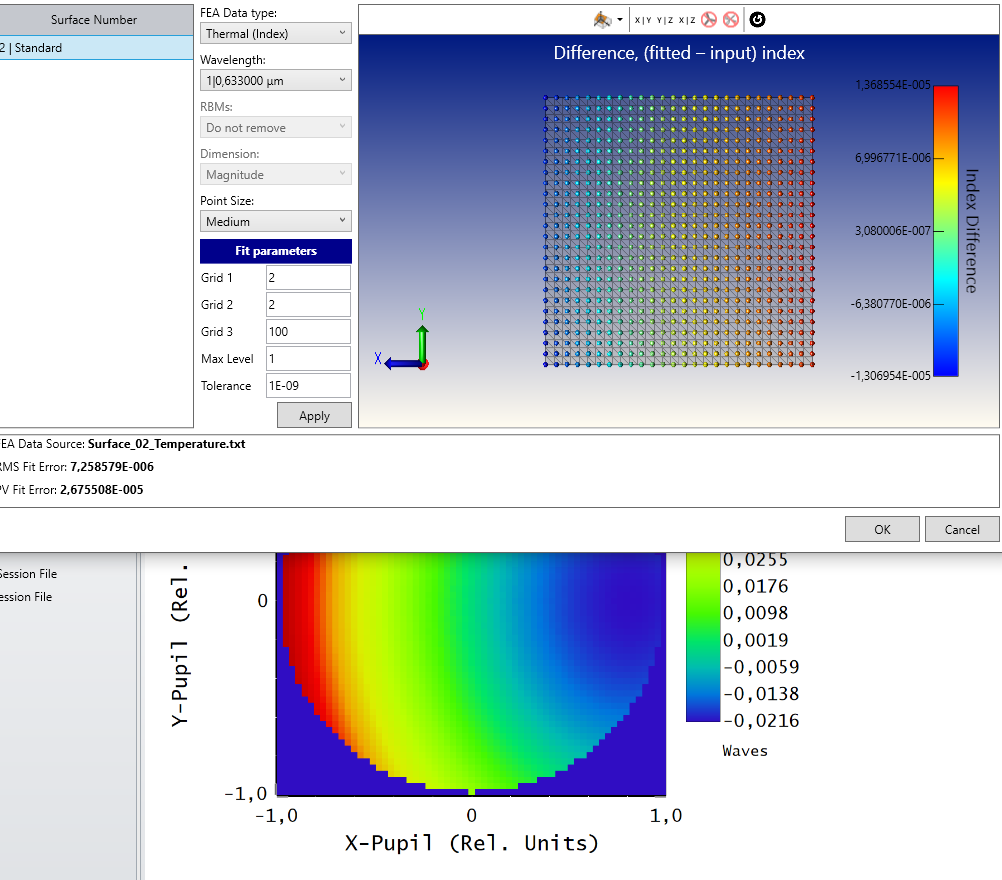Hello,
I simulated a cube with a temperature gradient from 20° C to 45° C. A collimated beam is incident on the cube. I'm evaluating the wavefront. But the result surprised me. I expected the wavefront to be gradient as well.

Do you know where the problem might be?





